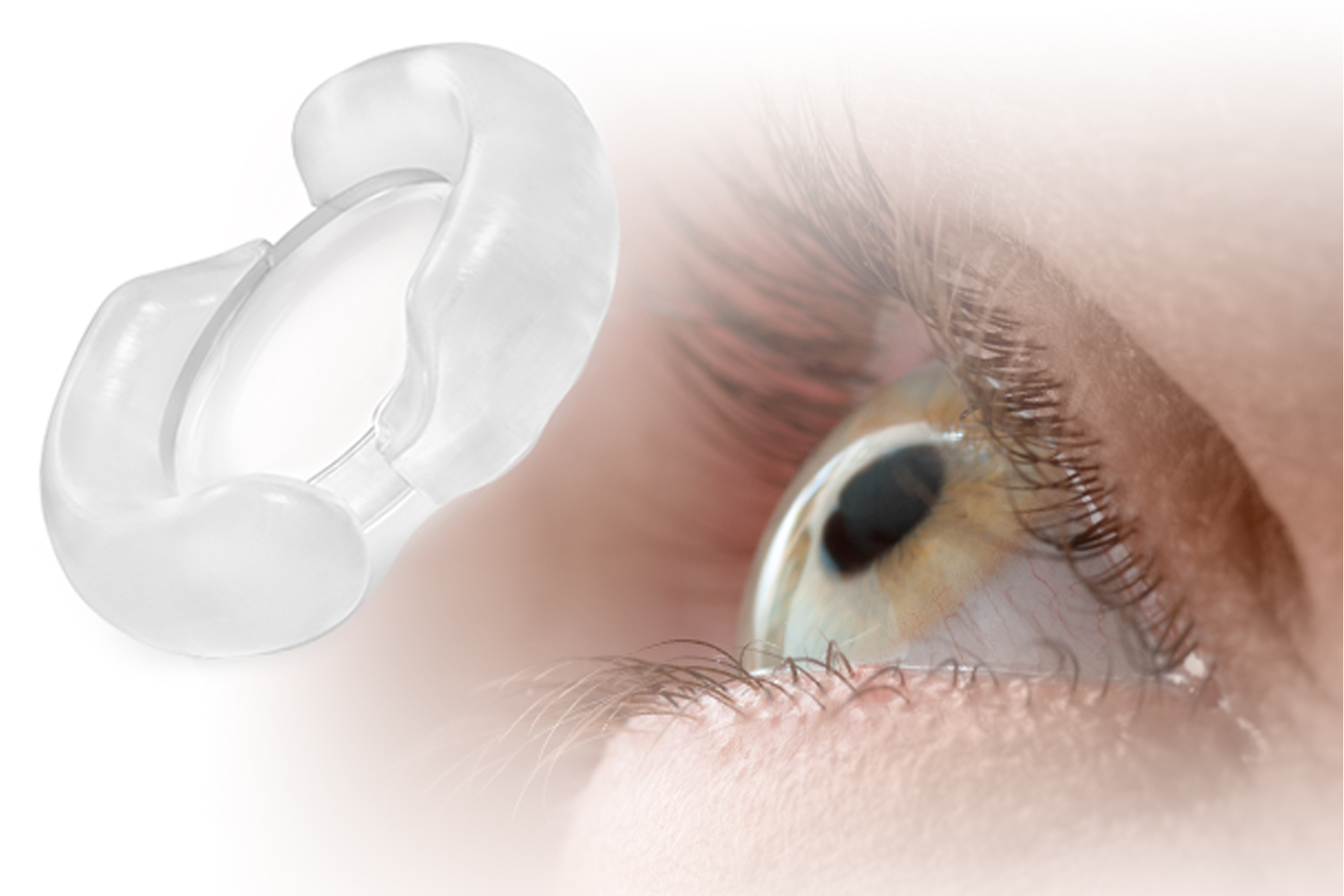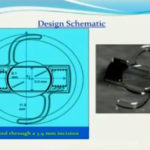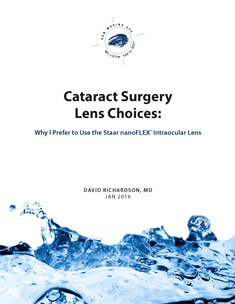
Fluid-Based Accommodating IOL
Dr. Louis “Skip” Nichamin gave an interesting talk at the 2013 Hawaiian Eye Meeting titled “Update on a Fluid-based Accommodating IOL.” This technology being developed by PowerVision involves an IOL with the lens optic and haptics filled with silicon oil. The idea is to use the power of the ciliary body (the presumed driving force behind accommodation which changes the focus of the natural lens from far to near). This tiny muscle within the eye would essentially pump fluid from the haptics into the optic. This extra fluid within the optic would increase the curvature of the lens effectively increasing the power.
One of the other unique strengths of this IOL technology is that it has the potential to provide five (or more) diopters of accommodation! Considering that the currently available pseudo-accommodating IOLs struggle to achieve 2-3 diopters this would be a real “game changer” if the promise is realized. We might know soon enough as a CE Mark study in humans is set to begin in Germany and South Africa later this year.
FluidVision Lens Concept Animation. Part of Dr. Nichamin’s Presentation Slides.
Update on a Fluid-Based Accommodating IOL
Dr. Louis “Skip” Nichamin's talk
I’ll pick up where Jay left off with an entirely different approach to the Holy Grail that we seek, which is accommodative IOL.
And I am a medical adviser to PowerVision, the company that is sponsoring this technology. Well, PowerVision set out a few years ago to create an intraocular lens, – intra-lens fluid, to create lens shape change and hence, accommodation.
And when we sat down and we discuss with the engineers what we needed to achieve we wanted to have a lens that we could easily place into the capsular bag in a conventional fashion, using the standard insertion approach (basically inject the lens), through a sub 4mm incisions so it would be suture less. We felt that we needed at least 5D of accommodative amplitude to make most patients happy at near. And we wanted to accomplish this by capturing the natural forces conveyed by the ciliary body to this annular capsular bag.
The current generation of this lens looks something like this: It is a central optic with peripheral fluid-filled annular kind of outrigger haptics. It’s comprised of a proprietary hydrophobic acrylic and it’s filled with silicone oil that’s exactly refractive index matched so the whole lens act as a single homogeneous optical unit.
In this animation you can appreciate the basic idea here. As the ciliary body contracts and relaxes and the bag moves, as it does physiologically, that fluid reservoir in those peripheral haptics is forced centrally through a radial channels that causes the anterior optic to bulge forward. And this x, again in the physiologic fashion, just like in Helmholtz’s theory and, by golly, we found that, as you all know the ciliary body continues to be functional as we age but also designed on the capsular bag remains flexible enough to convey these forces to the lens to create this shape change. And it turns out very small amounts of fluid and micro liters of fluid are involved which can cause enough anterior bulging to actually create 5, 10, even 12D of shape change.
So the history of this lens is, back in 2007, we implanted terribly sick glaucomatous blind eyes in south Africa and stimulated these eyes with pilocarpine and showed, by OCT, over 5D of accommodative amplitude. Then, later in ’09 and ’10 lenses went into sighted eyes (and we’re continuing to follow these patients) and what we found is that, first of all, the power calculations are quite accurate which is a big deal when you’re talking about a lens that’s capable of moving optically. Vision was good. Not perfect, but in the 20-25 range. Subjective accommodation using a push-down test, showed, on average, a little over 5D of accommodative amplitude and the capsules remain quite clear.
So pretty promising results initially and these were non foldable lenses put through a large incision with some induced astigmatism. Currently, a second-generation lens is available, it has been developed, which is optically improved. lt has a proprietary injector delivery system, which I’ll show you here just a second which will go through a…suture less incision and it looks kind of like this. It’s sort of a hydraulic system that uses viscoelastic to push this lens, in which is no small feat, by the way, when you have these big haptics. I’ll show you that in this video here in just a second.
And we’ll be implanting eyes both in Europe and South Africa in the coming year so this is one of the early devices going through a large incision and the trailing haptics is being dialed in. This is open sky in a cadaver eye… with an early prototype injector delivery device. You can see the haptics with this, kind of impressive, annular haptics and then here we’ll just see, kind of, in slow motion in a rabbit eye an injector system that’s a little bit closer to what we’ll be using in the clinical studies this year. You’ll see the leading haptics come out (and rabbit eyes, as you may know, are very small, very tight and yet) almost uniformly, this lens was able to be placed successfully without damage to surrounding tissues. Here is the optic being delivered and then the trailing, not unlike the dual optic systems because of the separation of the anterior capsule …. The bag remains remarkably clear even in these bunnies which as you know have tremendous fibrotic response. So that’s the injection.
We’ll be starting implantation in several areas in Germany and we continue to work in South Africa and we hope that later this year, we’ll have the additional data and visual outcomes to share with you.
So, thank you very much for your attention.
Source: http://video.healio.com/video/Update-on-a-Fluid-Based-Accommo;Hawaii-2013







When doing CE Mark Study, does that mean they actually have it working, and could be available in a few years in Europe ?
Hi Dr. David, It’s been a long time & I hope you are well. I finally had the Yag done to the right eye Nanoflex lens, and ended up with about 20/30 vision. I was 20/20 before the need for the Yag, so I had hoped I’d get back to that. I told my dr. that if I put my chin down on my chest and look up everything, even 30′ away becomes sharp. He said I was pinholing. I feel that as a result of the Yag, the lens has shifted and this is why I do not have… Read more »